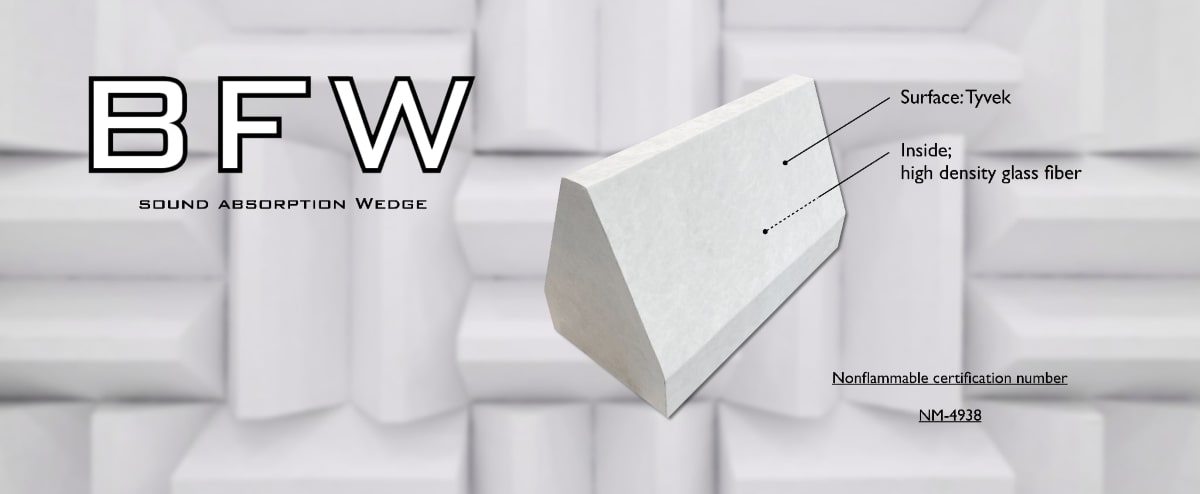Absorption Wedges vs. Flat Absorbers: A Comparison Based on Cut-off Frequency and the Inverse Square Law — Which is more suitable depending on room size and application? —
09/05/2025

MFAC / MSAC
Introduction: Absorber Choice Directly Affects Performance and Cost
When designing anechoic or semi-anechoic chambers, one key decision is whether to use absorption wedges or flat-panel absorbers.
Each structure significantly impacts both the cut-off frequency and the chamber’s ability to satisfy the inverse square law.
Absorption Wedges: Traditional and High-Performance
- Features: Targets a normal incidence absorption coefficient ≥ 0.99
- Below the cut-off frequency, absorption rapidly drops, requiring wedge lengths of at least λ/4
- For example, targeting a cut-off frequency of 125 Hz demands wedge lengths of approx. 1.1 meters
- Highly effective but requires large space and higher cost
Flat Absorbers: A Flexible, Modern Alternative
- Recent trends include high-density glass wool and multilayer structures (e.g., BFW + air gap)
- Though the cut-off frequency is generally higher, as long as the inverse square law is verified, ISO compliance is met
- Especially under ISO 3745:2012, chambers with absorption coefficients below 0.99 can still be certified if the inverse square law holds
Comparison: Choosing Based on More Than Just Performance
| Feature | Absorption Wedges | Flat Absorbers |
|---|---|---|
| Cut-off Frequency | Lower (design-dependent) | Higher, but acceptable in many cases |
| Space Efficiency | Requires large space (low freq.) | Space-saving with thinner design |
| Cost | High | Low to medium |
| Comfort (Listening) | More likely to feel ear pressure | Generally more comfortable |
| ISO Compliance | Matches older design standards | Optimized for modern inverse-square rules |
Our Approach: Designing for Frequency and Function
At Sonora, we optimize absorption structures depending on measurement needs:
- For precise measurements below 125 Hz → Wedges with BFW
- For mid-to-high frequency testing (1 kHz and above) → Flat-panel absorbers in compact chambers
- For modular or relocatable designs → Thin-layer BFB configurations in MSAC/MFAC
All designs are developed with inverse square law conformity as the foundation, ensuring compliance with ISO 3744, 3745, and 26101 standards.
Conclusion: Smart Absorber Selection Starts with the Inverse Square Law
The era of pursuing maximum absorption alone is over.
Now, the focus is on meeting the inverse square law—even with lower absorption coefficients.
Choosing between wedges and flat absorbers based on application, frequency range, and spatial constraints is the key to optimal chamber performance.